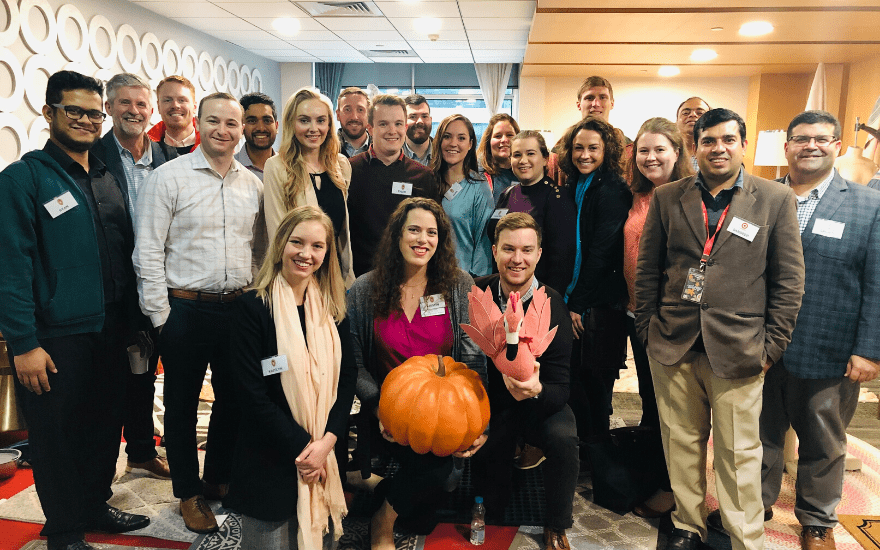As US looks for trade partners, retailers are becoming increasingly more involved in ensuring ethical sourcing. We visited Target’s sourcing services in Delhi, India to see how it happens!
There are a total of 21 Target Sourcing Services (TSS) offices around the world. They collaborate to identify what raw materials are needed and where to find the best labor for the best price. Many regions around the world are experts at different crafts and so Target cannot source all of their products in one place. Known for its expertise in textiles, many woven home furnishings and clothes are made in India.
They walked us through the process of source new products from beginning to end:
- Identify a need through consumer research
- Plan and Source: devise a strategy to determine where/how/what materials are needed
- The product design team then works with vendors on a designing a product, and Target’s buyers select the assortment.
- Vendors are vetted to ensure ethical sourcing before Target places a final order and negotiates the price
- Finally, the product is produced, packed and shipped to stores for guests to purchase.
TSS does intensive vetting of vendors and their products. Before Target purchases anything from a vendor, they must prove to be ethical, sustainable and safe. Employees of these vendors must make reasonable wages and work 8 hours or be paid overtime and comply with all labor laws. Workers also must have a comfortable working environment, which TSS inspectors audit randomly 5-6 times per year. Products are also mostly made of organic cotton and recycled materials, free of hazardous chemicals and limited amounts of water is used and polluted.
We departed TSS to visit one of their vendors – Randik in Uttar Pradesh. Radik makes clothing for several brands and retailers. Both designer brands and store brands are made in the same place – by the same people, with the same machines and sometimes with the same cloth.
The level of organization of their factory is incredible. They have signs in English and Hindi indicating the purpose each station, and arrows on the floor showing the flow of work from station to station. One floor is dedicated solely to cutting fabric gigantic laser cutters, but the true magic happens at assembly. Radik boasts 5,000 sewing machines, where clothes are meticulously put together one by one. More intricate designs like pleating and beads are taken to a separate station. A simple dress may take 45 minutes to complete. A dress with a lot sequin and beading may take up to 8 hours of labor. Products are checked several times before packaging and a large sample of their products are washed and put through a stress test to ensure quality.
This trip was truly eye opening by showing how much of our clothes are still made my hand by artisans and how many people are brought together to make even a single product. Not only have I learned about creating an ethical supply chain, but I am motivated and informed to become a more ethical consumer. In the future, Target plans to include RFID chips on their products so consumers can scan to see the journey their products, and it will be easier to see the transparency of their supply chain.
This article was part of the series describing the Marketing Centers’ International Trip to India in January 2020. The international trip is the culmination of a two-credit course. The overall learning objective is expanding student knowledge of marketing and other facets of running a multi-national brand in high interest markets beyond the U.S. While on site we visit the marketing offices of several companies and receive engaging case studies on the local consumer, company operations and the challenges of ‘local’ marketing outside the U.S. Students walk away from the trip with a different perspective prepared for working in global marketing and general management.
The 2020 course and international trip focused primarily on US based multi-national companies in India.
